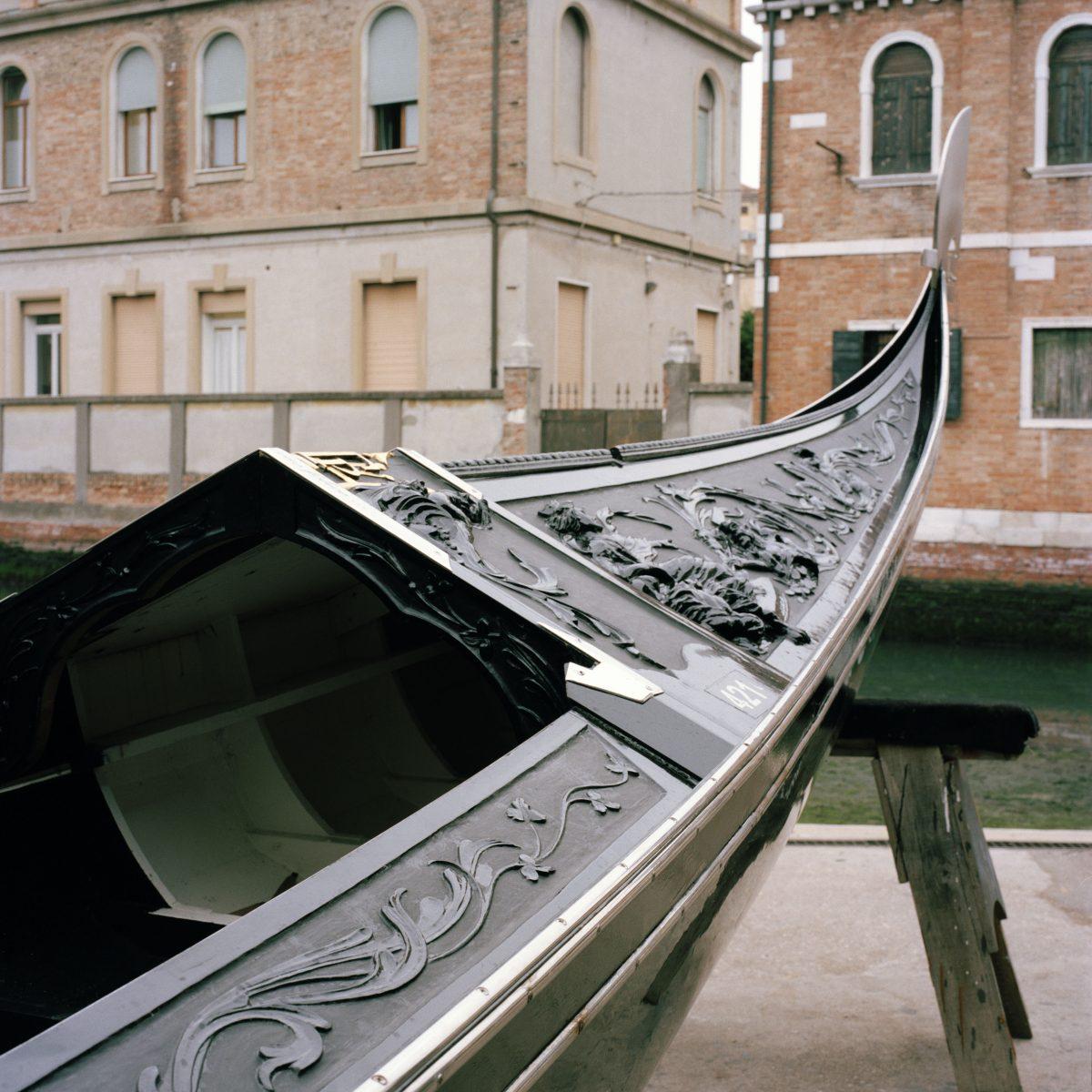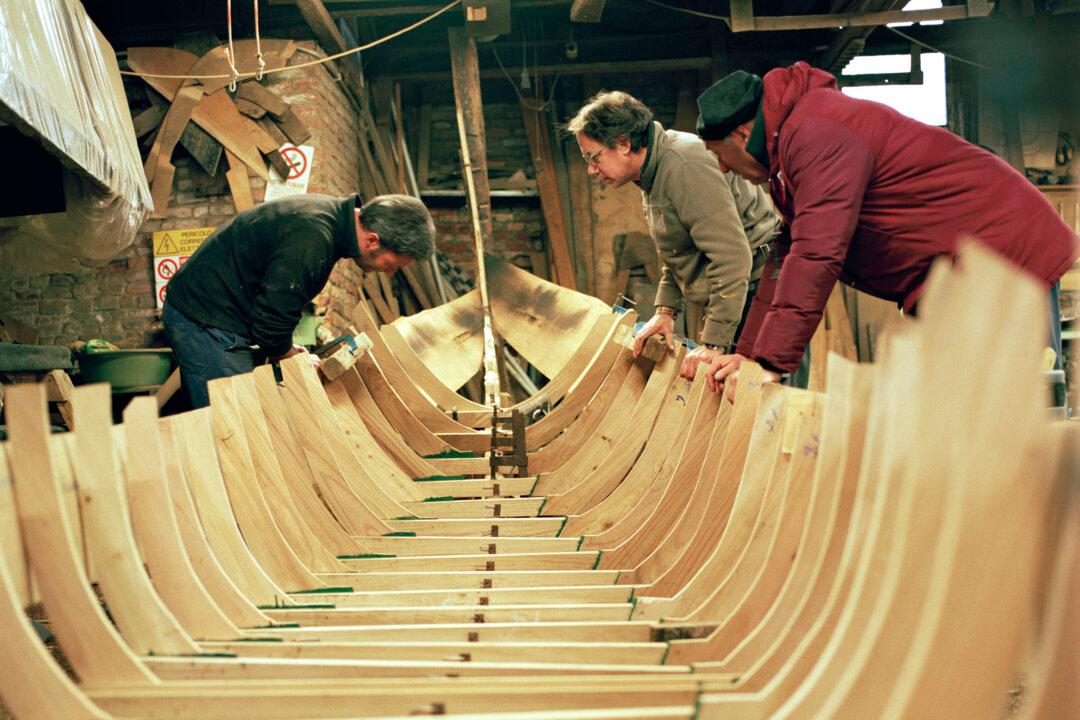
A finely finished Tramontin gondola. Susanna Pozzoli
In 1884, Domenico Tramontin established his boatyard, Domenico Tramontin e Figli, in Venice. It was in that boatyard, or “squero” as the Italians call it, that Tramontin built the gondola as we now know it.






